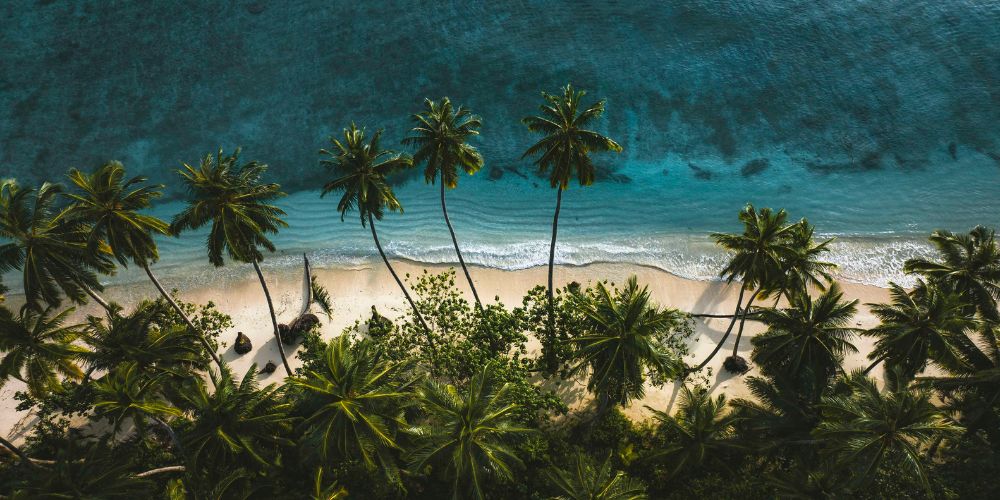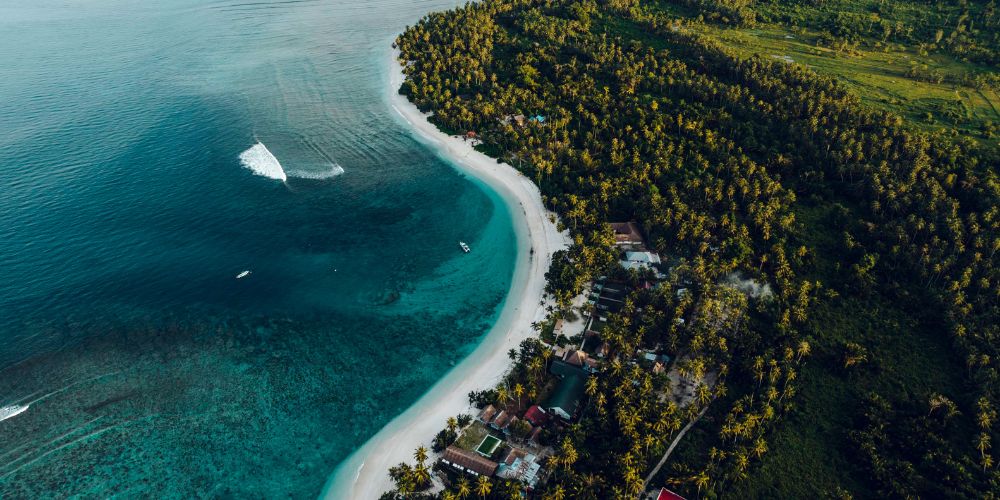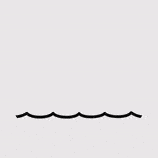Can you relate? One session, you have this feeling that you’ve improved so much, and the next day, you feel like you’re back to being a kook. Don’t worry, it’s not always you. This is influenced by many elements, such as the current, swell, tide, and wind. We call these factors’surf conditions,’ and they all have a huge impact on our surf sessions. In this article, we are focusing on one of the main reasons why surfing exists at all: ‘the wind’ and how it can influence our surf session.
Types of Wind
Offshore Winds:
It’s arguably the best surf condition for surfers all over the world, depending on where you are it’s more common in the early mornings surfing. It’s when the wind is blowing from the coast to the ocean. Every surfer in the world is waiting for offshore wind; it’s the wind that gives us time and clean lines. It holds the waves so they stay open for a long time, gives you time to pop up, and is perfect for maneuvering. With smoother and steeper waves, this is far and away the best surf condition for every surfer!
Onshore Winds:
It’s seen as the worst condition for most people; it definitely makes things more challenging. It’s when the wind comes from the ocean to the coast. If you compare offshore to onshore wind, you can think about how organized, clean, and smooth offshore wind is. On the other hand, onshore wind is the rebel condition of the ocean; it’s messy, choppy, and chaotic. The waves break fast, and you experience more closeouts because the wind pushes the waves from behind. It doesn’t give you the open waves and time that offshore wind does.
Strong onshore wind will not only create resistance against paddling out to the lineup but also induce anger issues. These conditions are super exhausting and annoying, but you will have a good night’s sleep, that’s for sure! But let’s look at the bright side; it doesn’t always have to be bad. It will push you to learn how to pop up quicker, improve your balance on the board, and learn how to make the best out of bad surf conditions. As a beginner, these conditions can even be beneficial. If you’ve just started to learn how to pop up, this wind can be excellent. You don’t need to paddle that hard because the foam holds enough power to push you forward and practice your balance and pop-up, it’s also often quieter in the lineup!
Cross-Shore Winds:
Sometimes this can be the worst of the worst; with the wind behind you it makes the waves messy, steppy, and generally difficult, however, if it crosses shore with the wind coming up the face of the wave, it can actually make it clean on the face while the rest of the water is messy, in these cases it will look terrible from the shore but once you’re in can actually be quite fun!
Side Shore: It occurs when the wind blows parallel to the coastline; it can affect the shape of waves. Depending on the location, it can provide better left or right waves.

How to read the wind?
Observe the direction of the wind. Look for a flag, or a tree, If you’re still uncertain about the wind direction and whether you should enter the water, seek guidance from a local or a more experienced surfer
How Does the Wind Affect Your Surfing:
We’ve already seen how wind directions can affect our surfing. Another element is wind speed, which influences the texture of the water’s surface. Higher wind speeds can create surface chop and spray, affecting the overall smoothness and stability of the water, making it harder to catch waves and maintain control as we lose our balance.
What to Expect from Mentawai’s Wind?

During the dry season of April to October, Mentawai typically experiences more consistent offshore winds. It’s during the wet season Nov-April that can bring more variable wind conditions. While offshore winds are still possible during this time, there may be more frequent onshore winds. Luckily for us, we have waves on both sides of the island so when it’s onshore here it will be offshore somewhere else! And vise versa, when it’s off Shore at HT’s it’s usually the best place to surf as the other spots will be onshore/cross shore.
Overall, Mentawai is known for its consistent surf conditions. Of course, there can be storms like in any other place. We can’t control nature. Luckily, you don’t need to worry about that at HT’s surfing resorts; we work with professionals who will ensure you have fun and a good surf session regardless of your surfing level, making your surf trip an unforgettable experience!
Conclusion
The right wind direction can create long, clean waves, perfect for surfing. Ever wondered why surfers wake up so early? It’s not only to avoid the crowd; it’s because of the wind. The ocean is waking up, and you have a small offshore breeze or even a totally still wind. But as we mentioned before, it can also ruin your surfing session. The most important thing is to know that you will learn from every surf session, whether it’s improving your balance, duck-diving, paddling, or simply observing others. Every surf session is a step closer to understanding the ocean and reading the waves. And for those seeking the perfect surfing conditions, Hollow Tree’s Resort offers an ideal haven with its untouched beaches and consistent waves, ensuring an unforgettable surfing experience.
At Hollow Tree’s Resort, we understand the crucial role wind plays in your surf session. With our prime coastal location, our expert guides diligently monitor wind patterns, ensuring optimal surfing conditions for you to catch the perfect ride every time. Whether you’re a seasoned pro or a beginner, mastering wind conditions is key. Join us at Hollow Tree’s Resort, where the wind becomes your ally in the chase of epic waves.
Related Read: Night Surfing, How to Share Waves and Respect Other Surfers, History of Surfing




